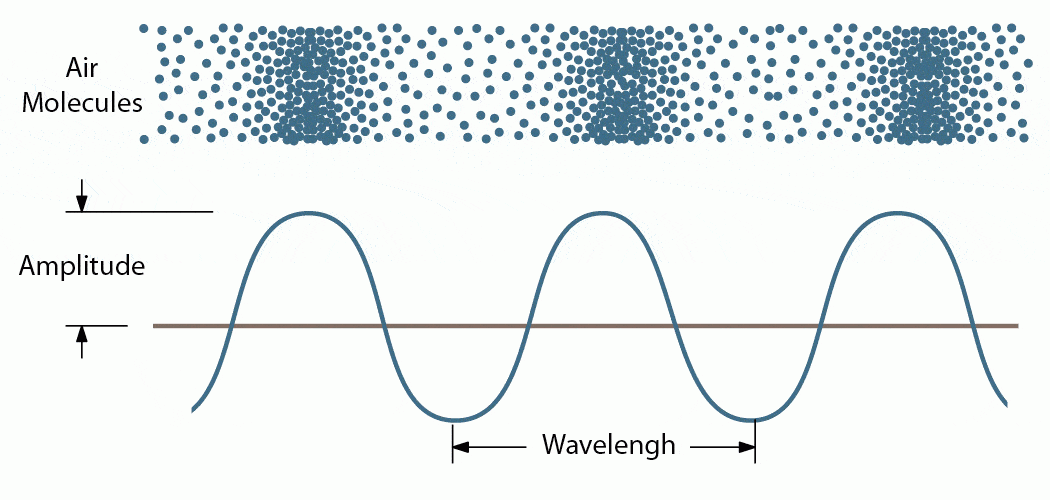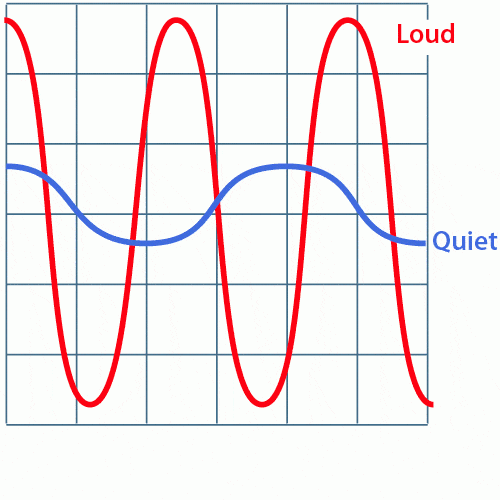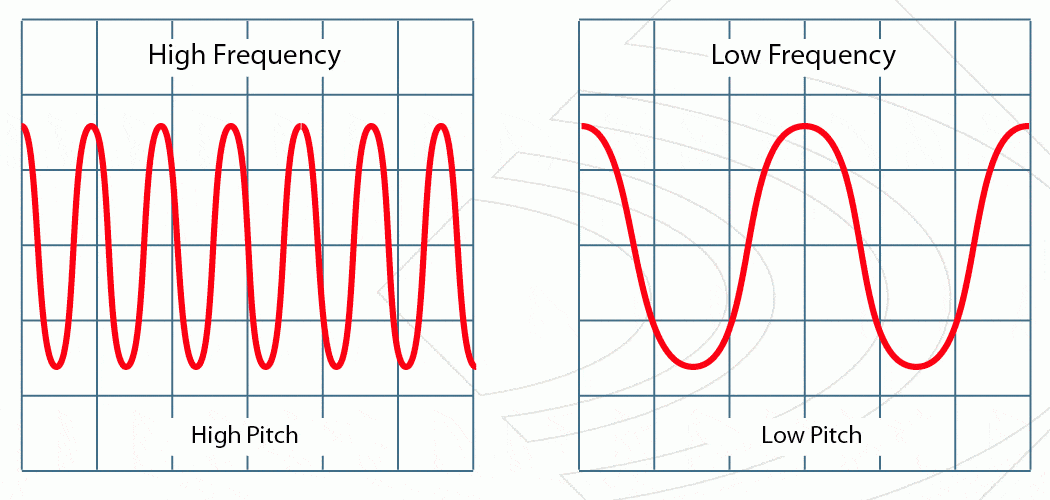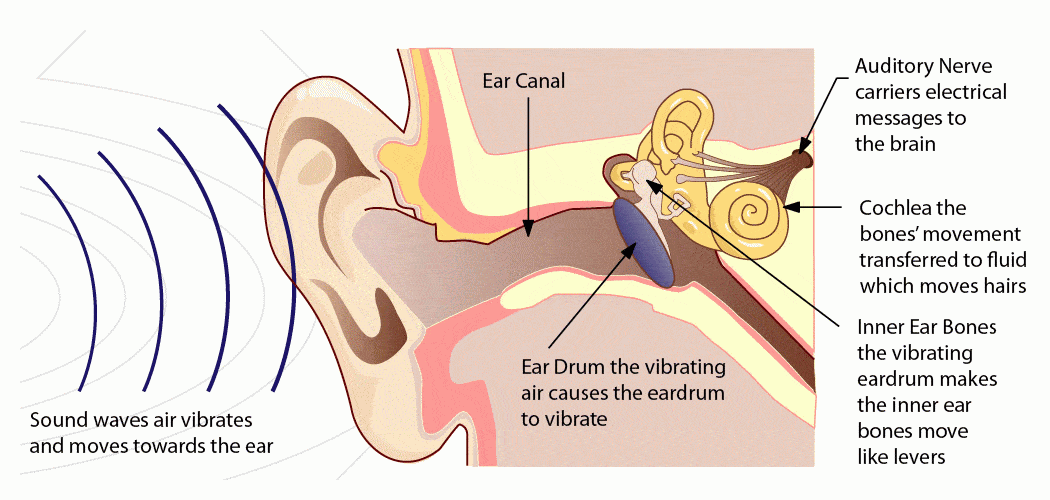What is Sound?
Sound is a form of energy, just like electricity and light. A sound is made when air molecules vibrate and move in a pattern called waves or sound waves. Think of when you clap your hands or when you slam the car door shut. That action produces sound waves, which travel to your ears and then to your brain, which says, "I recognize that sound."
- Sound is a wave, a longitudinal wave
- Sound needs a medium to travel
- Waves have an amplitude (volume), frequency (pitch), wavelength (speed), etc.
The science of sound: how sound waves work
 In the air, 331 meters per second (MPS) creates something of a "chain reaction," If you watch this closely, you'll notice that the waveforms because an individual air molecule gets a push, which causes it to push on the air molecule right next to it. As each air molecule recovers from its push, the wave passes.
In the air, 331 meters per second (MPS) creates something of a "chain reaction," If you watch this closely, you'll notice that the waveforms because an individual air molecule gets a push, which causes it to push on the air molecule right next to it. As each air molecule recovers from its push, the wave passes.
It turns out that air is able to support not just one wave but many different waves simultaneously. This means various pure tones can be mixed and sent through the air at the same time. This is where music, speech, and other "noise" come from.
When we draw a sound wave, the wave peaks and valleys are close together or far apart. Sound waves vibrate at different rates or "frequencies" as they move through the air. Frequency is measured in cycles per second, or Hertz, after the German physicist who experimented with sound in the 19th century. The faster an object vibrates, i.e., the higher the frequency, then the higher the pitch of the sound. For example, a tuning fork for A above middle C will vibrate 440 times per second and has a frequency of 440 Hertz.
What makes sound? Wavelength and amplitude
When a wave is created, the distance between one compression and the next compression is called the wavelength. The faster the sound waves pass a given point, the shorter the wavelength and the higher the frequency. Sounds of all frequencies travel at the same rate in the same medium. (Sound in dry air at 0 C travels at the rate of 1200 kilometers per hour, or 331.6 MPS; in a solid medium, the sound waves travel faster.)
The vibrations can also "squeeze" the air molecules together very hard or very gently. This squeezing is called "amplitude" and is represented on the top half of the diagram below. The bottom half of the diagram is a representation of the pressure of the air during a sound wave. The horizontal line represents normal air pressure.
The more we push an object to make it vibrate, the larger the vibrations and the louder the sound, or the greater the amplitude. Sound waves with the same frequency can have different amplitudes.

The amplitude is half the height of the sound wave
Since sound is a form of energy, it can be changed from one form to another. Other forms of energy can be transformed into sound. Sound energy can be changed into electrical energy. Sound waves that are changed into electricity can be seen on an oscilloscope.
Sound travels quickly in air at nearly 340 meters per second but can travel through steel at about 5,200 meters per second. 770 MPH is the speed of sound, or Mach 1.

When you go to a rock concert, you may have to cover your ears because the sound is so loud. This loudness is called intensity. Intensity is measured in units called decibels or dB. The threshold of sound is 0dB. A rock concert has an intensity of 120 decibels. Sounds of 120 decibels or greater can cause people pain and ear damage.
Sound travels as sound waves. The bigger the vibration, the greater the amplitude of the waves and the louder the sound.
How does pitch work?
Every sound has a range from a high to a low pitch. The pitch of a sound depends on the frequency of the vibrations that cause it. The frequency of a sound is the number of complete waves or vibrations that go past a particular place each second.
- The more vibrations per second, the higher the frequency and sound pitch.
- The fewer vibrations per second, the lower the frequency and sound pitch.
For example, a sound with a frequency of 880 Hz is an octave higher than one with a frequency of 440 Hz. For humans, hearing is limited to frequencies between about 20 Hz and 20000 Hz, with the upper limit generally decreasing with age.

How the human ear hears sound








